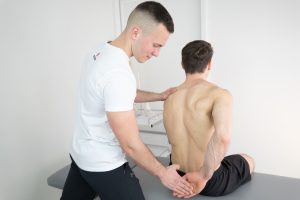
I currently have a frozen shoulder from an accident that happened 1 month ago, and I wore a sling for 1 month. So, my arm didn’t move at all.
Which creams should I use to warm up my shoulder because it feels good when I exercise, but when it cools down, I endure the pain??
Stiffness in the shoulder after trauma and immobilization is not uncommon. As the most mobile joint in the body, any restriction of movement in it is clearly noticeable and interferes with daily activities. Particularly pronounced stiffness, accompanied by pain, especially at rest, during nighttime rest, or after exercising, is also known as frozen shoulder.
Like the “regular” frozen shoulder, the post-traumatic version is characterized by inflammation of the shoulder joint capsule, which causes pain, as well as the formation of scar tissue, which restricts movement. The cause in this case is trauma (impact, sprain, bone fracture, surgery, and even, although very rarely, injection).
For a long time, the standard approach in the field was that mobilization, especially with aids like a stick, together with rather painful stretching by a physiotherapist, was the main therapy. Relatively recently, a large Dutch study, which was later replicated, showed that such treatment prolongs the duration of the condition by 60-100%. From my practice, I see that this knowledge has not yet found its way into the standards of frozen shoulder treatment. In that sense, the dominant advice is still for the patient to exercise as aggressively as they can tolerate independently, while managing the resulting pain with medication, creams, or ice. Such approaches can be considered outdated, and although they seem logical, they only bring harm.
The modern approach is based on pain control (using various procedures from the field of conservative orthopedics and physiotherapy), manipulation of soft tissues to reduce global tension around the shoulder, and exercising exclusively below the pain threshold. In this process, the guidance and control of a physiotherapist are important, as well as the patient’s understanding of the nature of the problem and the time needed for physiological processes to lead to complete resolution of stiffness.
Top of Form
